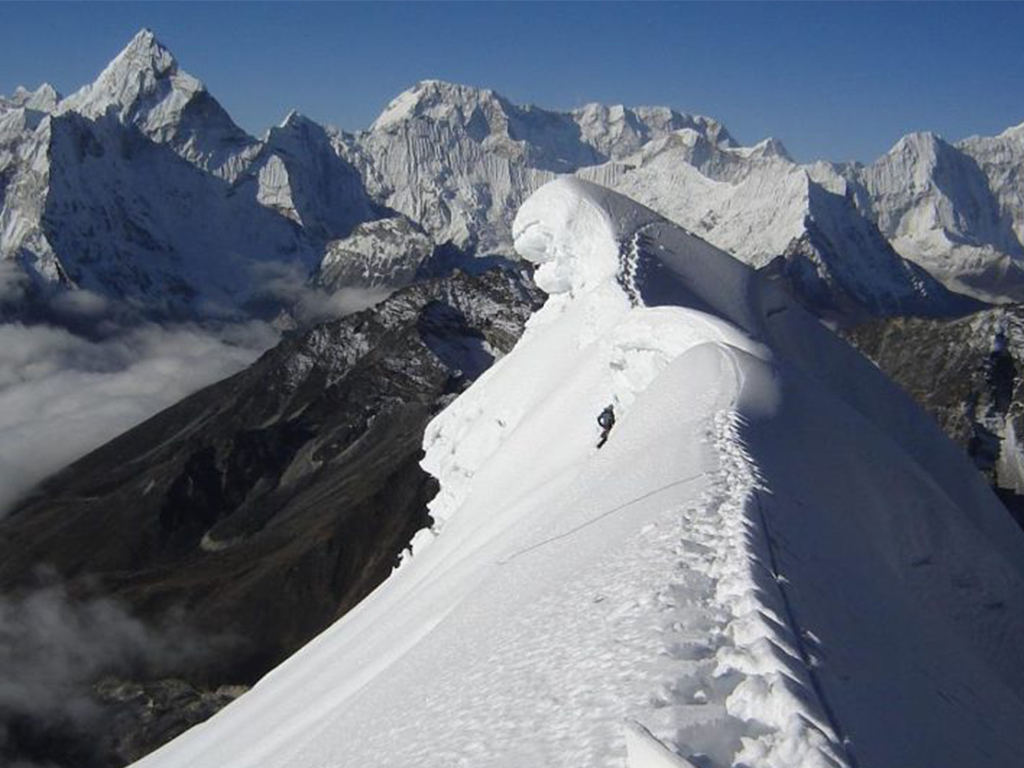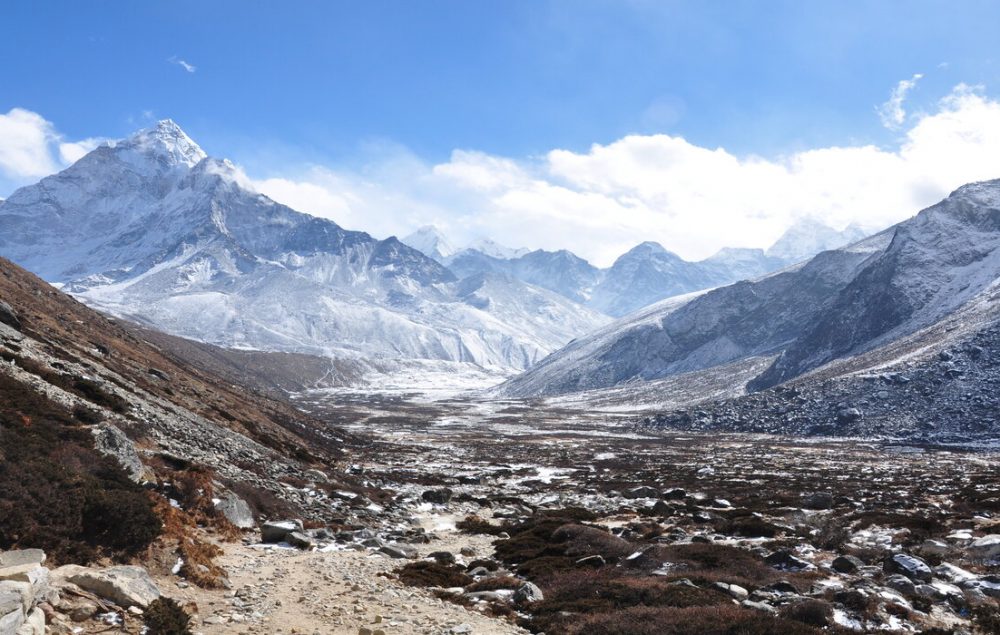Although a challenging climb, Lobuche Peak Climbing is favored as a favorite climbing venture by most climbers. Beginning the trip with endearing treks through Sherpa villages and Sagarmatha National Park, the journey culminates at the summit of the Lobuche Peak (6119m). The summit has a panoramic view of Everest (8,848 m), Lhotse (8,414 m), Ama Dablam (6,856 m), Nuptse (7,861 m), Cholatse (6,335 m), and Pumo Ri (7,165 m). The trek prior to the climb also takes you along the classic Everest Base Camp Trek revealing a number of cultural attractions as well.
This 20-day climbing journey begins at Kathmandu. In Kathmandu, you will visit some UNESCO World Heritage Sites, and prepare for the trek. You will take a flight to Tenzing-Hilary Airstrip in Lukla and begin trekking. The trek passes through popular Sherpa villages namely Namche Bazaar, Tengboche, Dingboche, Lobuche, and Gorakshep en route to Everest Base Camp. Walk along with other climbers and trekkers, and locals, and yaks on the trek. A short hike from Gorakshep will take you to Kalapatthar that offers the up-close sight of the Everest summit.
Afterward, you’ll descend back to Lobuche village and take a detour east of the village to arrive at Lobuche High Camp (5,400m) located at the southwest ridge of the peak. The final climb accounts for a sharp ascent with an exposed ridge that poses difficulty. You will use fixed rope and climb up with the help of ice-axe and crampons. Once at the summit, you’ll be welcomed with the beautiful sight of the Everest Mountain Range. Afterward, you’ll descend to Pangboche village and trek back to Lukla via Namche. Compared to most other small-peaks, Lobuche requires some climbing and technical knowledge. Lobuche East remains accessible during two different seasons, spring (Mar-Jun) and autumn (Sep-Nov).
Danphe Adventure Treks specializes travel and tour around Nepal. You can join our fixed group or indulge in a private trip at a reasonable cost. Our Sherpa leaders are experienced and have led a countless number of trips to Lobuche Peak. They will accompany and support you every step of the way.


